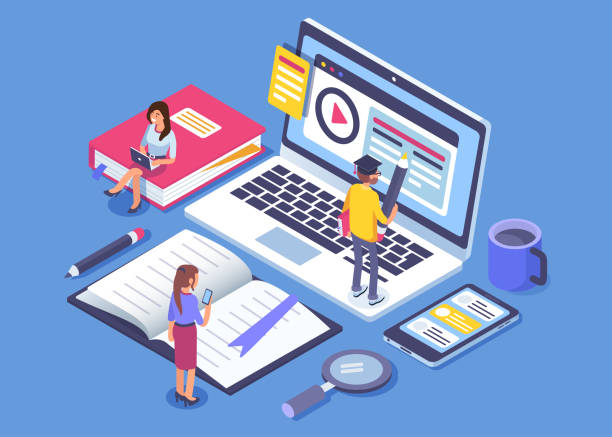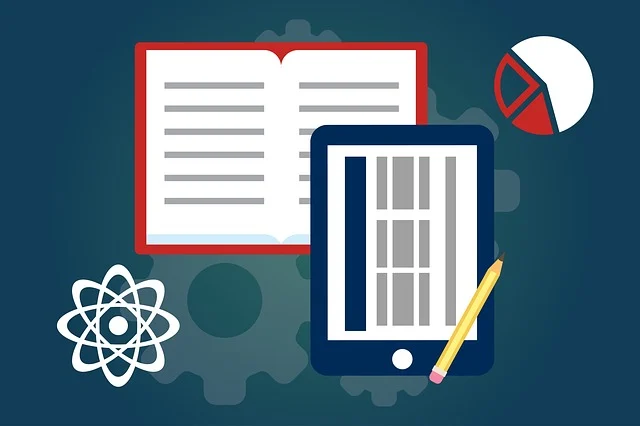The Future Of Instructional Design With AI

The Future Of Instructional Design with AI – In the last few years, the way we design lessons has changed a lot because of new technology like Artificial Intelligence (AI).
This has completely transformed the way we teach.
Old-fashioned ways of teaching are being replaced by new methods that focus on getting students involved, customizing their learning experience, giving them more options, and making it more like a game.
Furthermore, collaborations are being made to bring more advantages to students. We will look at how gamified, personalized, and flexible learning can change the way students learn, by using AI and partnerships.
Read: Age of Generative AI: Digital, Technical And Soft Skills Required For Success
Make Education Engaging With Gamified Learning
One important part of the future of Instructional Design is using games for learning.
Gamification means to use game design elements and principles in education, which makes learning more fun and interesting for students.
Gamified learning means using games, virtual environments, and rewards like badges and leaderboards to make learning more fun.
It helps students stay motivated and complete their tasks and goals.
One advantage of gamified learning is that it takes advantage of students’ natural urge to compete, accomplish tasks, and have fun.
By making education enjoyable, using gamification can make students more motivated and enthusiastic, which results in better learning results.
Gamified learning lets students practice problem-solving, critical thinking, and decision-making skills in a safe and controlled environment, so they can learn from their experiences.
Personalised Learning
Another important part of the future of teaching design is individualized learning. Personalized learning means customizing education to match the specific needs, interests, and ways of learning for each student.
This can be done by using data-driven analytics, adaptive learning technologies, and AI algorithms that can evaluate students’ strengths, weaknesses, and preferences, and provide personalized learning experiences accordingly.
Personalized learning means that students can learn at their own speed, get specific feedback, and use resources that fit their own needs.
It helps students become independent learners and take responsibility for their education, which can make them more motivated, involved, and successful in their studies.
Customized learning also acknowledges that students come from different backgrounds and have different abilities and interests. It gives everyone an equal chance to education.
Flexible Learning
Being flexible is also very important for the future of Instructional Design. Flexible learning means being able to change the way we teach so that it suits different situations.
This could include things like adjusting the times when students learn, tailoring the way we teach to their preferences, or considering the different environments they are in.
With new technology, students can learn anywhere and anytime using different devices instead of just in a classroom.
Flexible learning means being able to learn in different ways. This could be combining online and in-person classes, learning online before class and doing activities during class, or using mobile devices for learning on the move.
Flexible learning means recognizing that students learn in different ways and have different preferences.
It gives students the chance to decide how, when, and where they want to learn. This helps them become more independent, able to control their own learning, and adaptable.
The future of Instructional Design is about using different ways of teaching and learning, such as games, customized lessons, and adaptable learning methods, to keep students engaged.
Gamified learning means making education fun and interesting by adding game elements. Personalized learning means customizing education to match each person’s needs.
Flexible learning means adapting education to different situations and changes. Now, let’s look at how combining AI and strategic partnerships can make these teaching methods even better for students.
Instructional Design With AI: The Future Is Here
As we keep looking into the future of Instructional Design, we study how Artificial Intelligence (AI) can make gamified, personalized, and flexible learning even better.
AI can change education by using data, finding patterns, and making predictions. It can give personalized insights, do routine tasks automatically, and make learning experiences that adapt to each student.
However, it is important to use artificial intelligence (AI) carefully and morally to make sure it helps students in a responsible and effective way.
1. Automate Routine Task
Artificial Intelligence (AI) can make tasks that are normally done repeatedly in Instructional Design easier to do automatically, which means educators can have more time and resources to concentrate on the more important and imaginative parts of teaching and learning.
For example, tools that use AI can make learning materials, tests, and quizzes without needing people to make them by following certain goals or rules.
AI can help teachers grade assignments and give feedback to students faster. This takes away some of the work for teachers and ensures that students get feedback quickly and consistently.
Moreover, AI can study student information to find commonalities and tendencies, which can help determine the best way to design instruction.
For instance, AI can look at data on how much students are involved in their studies, how well they are doing, and what they like in order to make learning plans better, change the way lessons are given, and make each student’s learning experience unique.
Using AI to automate regular tasks can make the process of designing instructions more efficient and easier to manage. It helps maintain good quality and effectiveness.
2. Personalized Insights
One way AI helps in creating educational materials is by giving personalized feedback on how students learn, what they like, and how well they are doing.
AI technology can look at a lot of information, like how students use educational materials and tests, to find common patterns and trends. These insights can then be used to understand what each student is good at, what they struggle with, and what they don’t know yet, and adjust teaching accordingly.
For instance, AI-based learning analytics can give students instant feedback and suggest what they should study, practice, or review based on their individual needs.
AI can also find out which students may be having difficulties and step in early to give them extra help, such as personalized tutoring or mentoring, to assist them in doing well.
By using AI, Instructional Designers can make learning experiences better, faster, and more helpful for each student.
3. Ethical Considerations
Using AI in Instructional Design can be helpful, but we need to be careful and responsible. There are moral things to think about like keeping data private, being fair in how algorithms work, and being clear about what we do.
Instructional Designers must keep in mind the possible biases and limitations of AI programs and make sure they use a varied and inclusive range of data to train and test these programs.
Furthermore, it is essential to keep learners’ personal information private and protect their data in order to preserve trust and confidentiality.
In addition, it’s important to be clear and open with learners about the use of AI in Instructional Design.
Students should be told how their information is being gathered, analyzed, and utilized to make their educational experiences more tailored to their needs.
They should be able to choose whether or not their data is collected and used, and have control over how much data is collected and used.
Besides thinking about what is right or wrong, it is crucial to make sure that AI is used to make human teaching better and not replace it.
AI can help with regular tasks and give personal advice, but educators are still very important for having meaningful conversations, creating connections, and being mentors.
Instructional designers should consider creating educational experiences that combine AI-driven personalization and instruction focused on the needs and preferences of humans.
4. Collaboration
One important part of the future of Instructional Design is when educators, Instructional Designers, and AI developers work together and become partners.
Instructional designers collaborate with educators to design engaging learning experiences, taking into account their teaching objectives, teaching methods, and student traits.
They also have to work together with AI developers to understand what AI can and cannot do, and use it carefully in Instructional Design.
Additionally, Instructional Designers can work together with other important people, like educational researchers, policymakers, and industry experts, to keep up-to-date with the newest research, most effective methods, and upcoming trends in the field of AI in education.
Forming these partnerships can help create new ideas, encourage AI to be used well, and in the end, help students learn more in a way that is interesting to them and fits their needs.
5. Adapt Learning Experiences
AI can also make a big difference in Instructional Design by creating personalized learning experiences. Adaptive learning means changing how we teach to fit each learner’s needs and progress.
With AI, people who create lessons can make learning experiences that change as they happen, using information from how people respond, behave, and perform.
For instance, AI programs can examine how students interact with educational materials. This includes how much time they spend on each part, how they answer questions, and how engaged they are.
The AI can then change the difficulty, speed, or order of the content based on this information.
AI can give tips, explanations, or extra help depending on how well someone is doing or where they are having difficulty.
This helps create individualized and adaptable teaching that meets the specific needs of each student, making sure they get the best results possible.
Conclusion
The future of instructional design is all about using different ways and methods to make learning exciting for students. This includes using games, personalizing learning to each individual student, allowing flexibility in learning, and using artificial intelligence in a useful way.
Artificial intelligence (AI) can give us specific information that is tailored just for us, do tasks that we do over and over again automatically, and make learning experiences that can change and adjust to our needs and abilities.
But, it’s really important to use AI in a responsible and ethical way and make sure it helps humans instead of replacing them completely in teaching.
Working together and forming partnerships between teachers, designers, and AI developers is very important in coming up with new ideas and helping students.
As we move forward in the field of Instructional Design, using AI in a careful way can really improve how well students learn and get ready for the future.







